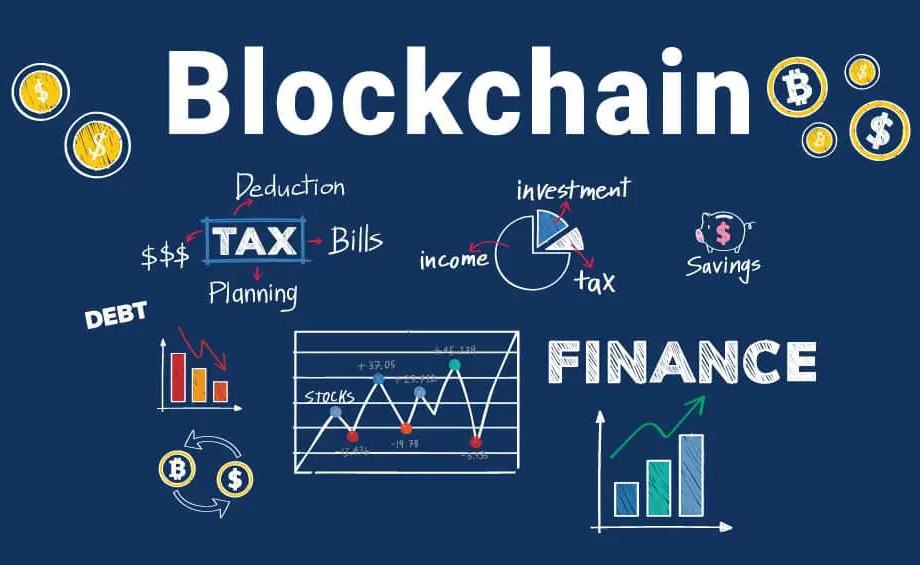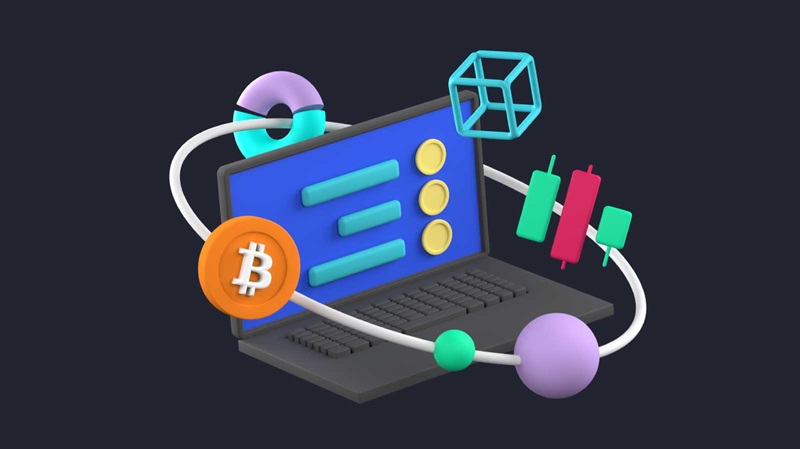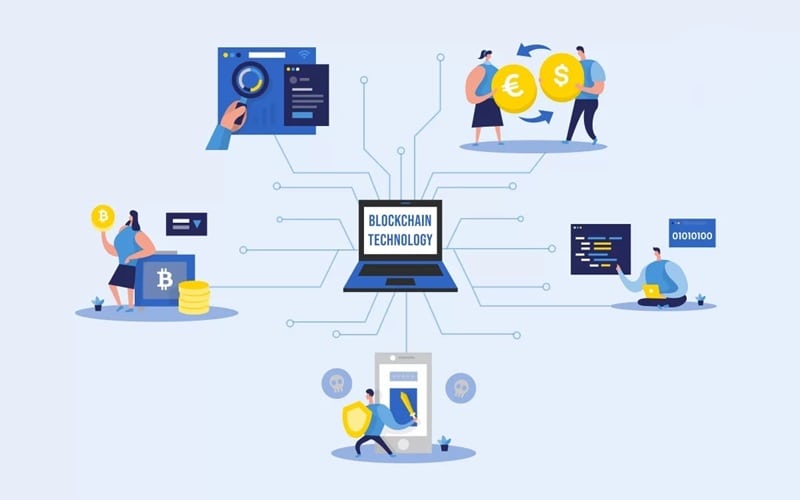Is blockchain the hero we need to keep our votes safe? We’re all tired of headlines screaming about election tampering. So now, we turn our eyes to a tech fix: blockchain. But wait – it’s not all victory marches and solved puzzles. When we dive into the challenges of using blockchain for voter fraud prevention, a labyrinth of tech and trust issues emerge. Can this digital ledger be the watchdog that bites back against election fraud? Buckle up, friends. I’ve mapped out the maze so we can scope out every twisted corner of this grand idea.
Understanding Blockchain in the Electoral Process
Blockchain Technology in Elections: Pitfalls and Potential
Blockchain in voting sounds perfect. We think of it as a tool to stop cheating and make sure each vote counts. This tech records votes in a way that no one can change. That means, once your vote is cast, it’s safe and sound. Everyone can see the saved votes, making things crystal clear and honest.
Yet, it’s not all smooth sailing. We face real road bumps bringing blockchain into votes. First, there’s this big word, “scalability.” It’s a tough puzzle. Blockchain needs to handle millions of votes fast and without breaking down. We need computers and networks strong enough for that big job.
We also worry about keeping voters hidden, while still showing votes are real. Think like spy movies, where the hero hides but leaves no doubt they were there. That’s hard to do. Each vote must be secret but still prove it’s not fake.
The Complexities of Secure Voting Systems and Blockchain
Now, let’s talk locks and keys – security. It’s important! In digital voting, bad guys try to hack in. You don’t want anyone messing with your vote. Blockchain’s tough to crack, but not impossible. It’s like a lock that’s hard to pick, but it happens. So, we work hard to make that lock as strong as it can be.
Another head-scratcher is checking who’s voting. How do we know you are, well, you? We need a rock-solid way to prove it. But your ID must stay hidden. Tricky, right? Yet, it’s a must to keep votes fair and true.
Don’t forget about all of us. We all need to get how to use this tech. If it’s too hard, people won’t vote. That’s a big no-no. We need it simple. Like using a phone or remote – easy-peasy. Plus, we need to teach folks about it. So, we bring lessons to help everyone understand.
Money matters too. Setting up blockchain isn’t cheap. We want it to cost less than older vote ways. We must find the balance – a system that’s both good and doesn’t burn through cash.
Lastly, we think about those who set the rules. Governments and laws shape how we use blockchain. We chat with leaders and show them how good this can be. But we must play by the rules. That takes time and talk.
Look, I get it. This sounds big and brainy. But if we don’t aim high, we’ll never hit the stars. We want votes safe, smooth, and open for all to see. It’s about making sure our choices really count.
Bringing in blockchain, we face twists and turns. It’s not just about code and tech. It’s about making it work for everyone, everywhere. We keep at it, solving each puzzle, piece by piece. And in the end? We could change voting for good – making it as true as can be, one block at a time.
The Technical and Human Challenges of Implementing Blockchain
Overcoming Voter Identity Verification Issues
Using blockchain in elections is tough. We have to check each voter’s identity. This means we must be sure each person is who they say they are. We don’t want someone voting as someone else. Yet, we must keep how they vote secret. It’s a big deal to make this work right.
First, we have to get people’s info. We check it against trusted records. We must do this before they can vote. We use tech to make sure the info is valid. This way, their vote can count.
We can use blockchain to keep votes safe. Each vote is a block in the chain. It’s tough to change votes this way. Votes become like a locked box that only the voter can open.
But tricky bits pop up. What if someone can’t show who they are? Or what if their info is wrong? We have to fix these problems. We must make sure everyone can vote. No one should be left out.
Addressing Technical Literacy for Voters
Now, let’s talk about understanding tech. It’s key for using blockchain. Some may say, “What’s blockchain?” Or, “How do I even vote?” We need to help people learn. Voting should be easy for all.
We teach voters about blockchain. We show them it’s safe and private. We give them steps to vote. We make sure the tech works on phones and computers. This way, more people can use it.
When people know how to vote with blockchain, they can do it from home or work. They don’t need to go to a voting place. This saves time. But, we need to be sure people know what they are doing. Else, they might do it wrong. That would be a mess!
Doing this costs money. We need to think about that. The cost should not be too high. We want to keep voting fair and open to all.
Making all this happen is not simple. But it’s worth it to stop bad voting practices. With hard work, we can get there. We can make sure each person’s vote is heard. This makes our elections better and fairer.
Assessing Blockchain’s Role in Election Security and Transparency
Can Decentralized Ledgers Adequately Prevent Electoral Fraud?
Many ask if decentralized ledgers can truly stop cheating in our elections. The simple answer is: Yes, they have the power to greatly reduce fraud. Let me break this down. Decentralized ledgers offer a public record that is tough to alter. This makes tampering with votes hard for bad actors.
Each voting record is stored across many computers. So, for someone to change a vote, they’d need to hack multiple systems at the same time. That’s a tall order. Even then, every change leaves a trace. This means we can catch and correct issues as they pop up, making sure every vote counts as it should.
But don’t get me wrong. There’s no perfect shield against all fraud. Hackers never rest, and they’re always getting smarter. Still, blockchain shines in the way it openly shows all transactions. It brings everything into the light, leaving less room for dark deeds.
Now let’s talk tech. Blockchain’s strength lies in cryptography. These are like secret codes that keep data safe. They confirm that a voter is who they say they are without giving away who they voted for. This tech secures votes on the blockchain like treasures in a vault.
Despite these perks, it’s not all smooth sailing. Scaling these systems to handle millions of votes is tough. Keeping them running fast while rock-solid secure is a fine balance. After all, a voting system that’s slow or breaks on election day is no good to anyone.
Balancing Voter Anonymity Concerns with Election Auditability
Staying anonymous is key for voters. It lets them pick their choice without fear. At the same time, we need to be able to check and prove that an election was fair. Blockchain can do both, but it’s tricky.
Smart contracts, think of them as little computer programs, help here. They can check if the votes are following the rules without giving away who voted for whom. This keeps the who and what of each vote apart but still connected. This means voters stay private, but if we ever need to, we can make sure only legit votes count.
On one hand, we’ve got voter privacy. On the other, we have the need to make sure a vote is right and real. Tackling this balance means lots of testing and being super careful about how we build our systems. We have to get this mix just right to keep trust in our elections.
Now, making sure voters can use this tech is key. It’s no good if it’s too tough for folks to understand. This is why education on how blockchain voting works is so important. Clear guides and help can open the door to everyone. The goal is a voting system that’s easy to use, safe, and clear.
So, can blockchain fix all our voting woes? Not alone, no. But as part of a bigger toolkit, it offers strong ways to keep votes secure and trust in our elections solid. That’s what we’re aiming for: a future where voters feel their voice counts and the process is crystal clear for all.
Navigating the Regulatory and Trust Barriers in Digital Voting
Blockchain Regulation for Voting: Global Perspectives
Countries around the world face a serious challenge: making sure elections are fair. Everyone wants their vote to count, and no one likes cheaters. This is why we talk a lot about blockchain in elections. But, building secure voting systems isn’t just about fancy tech. We must get rules right. Every country has its own way of looking at this tech. Some are all in, while others have doubts.
Here’s the deal. Blockchain can help a lot in preventing electoral fraud. We lay down digital tracks that are hard to mess with. This means we can see each step of the voting process. More secure? Yes, but also more complex. It’s like when you put together a big toy without the manual. Some parts fit nicely. Others, not so much.
Voters must trust the system. If they think the election is rigged, they won’t vote. That’s why voter identity verification is key. We need everyone to know that the person voting is who they say they are. No fakes allowed. But how do we prove it over a computer? It’s tough and needs smart solutions.
Building Governmental and Public Trust in Blockchain Applications
People need to believe in blockchain technology. If they don’t, they won’t use it. The same goes for governments. They have to trust this tech before putting it in charge of something as big as voting. How can we make sure of this? We start small. Testing the waters with pilot projects is like dipping your toes in the pool before jumping in.
Education plays a big role, too. Try explaining blockchain over dinner and watch the eyes glaze over. That won’t work. We need clear, simple words. People must know how blockchain keeps their vote safe and secret. Trust comes from understanding.
But let’s talk turkey—money. The cost of blockchain infrastructure might raise eyebrows. Not every country can shell out that kind of cash. It’s not just about buying new tech. It’s also keeping it running smooth and safe.
Security is another big chapter. Hackers love a good challenge. We put up digital walls, but they keep trying to climb. We can’t let them break in and mess with the votes. That’s where smart contracts for voting step in. They’re like the burly bouncers at the door of a club, keeping the bad folks out.
This all boils down to a delicate balance. It’s like walking a tightrope with a pole. On one end, you’ve got all these techy things. Like blockchain network nodes in voting. On the other, people and their trust. Lean too much one way, and you’ll take a tumble.
So, to wrap things up, this isn’t just about tech. It’s about making folks feel safe about voting digitally. And how we make rules that fit snugly into this new world. We’re on a journey with blockchain, and it sure looks promising for keeping elections clean. It’s a big jump from paper ballots, but one worth taking for a better tomorrow.
In this post, we dove deep into blockchain’s role in voting. We looked at the pros and cons of using this tech in elections. While it’s got potential to make votes safer, there are big challenges in making sure it works right. We need to check that every voter is who they say they are. Plus, we talked about how important it is that everyone knows how to use this tech.
We also explored if blockchain can truly stop cheating in elections and keep our votes secret but checkable. Finally, we touched on the rules we need to set and the trust we must build with voters and governments alike. Blockchain could change voting for the better, but there’s a lot of work to do. I believe we can tackle these challenges head-on and find ways to make voting more secure and clear for all. Let’s keep the conversation going and work toward a future where every vote counts and is counted right.
Q&A :
What Are the Main Difficulties in Implementing Blockchain for Voter Fraud Prevention?
Developing and deploying a blockchain system for voter fraud prevention comes with various challenges. Firstly, ensuring the necessary technical infrastructure is in place can be costly and complex. National governments would need to provide a robust and secure system that all citizens can access. Additionally, there’s a need to maintain the security and integrity of the voting data against sophisticated cyber threats. Training and educating the electorate and officials about the new system is another hurdle, along with concerns around voter privacy and the potential for technology to exclude certain demographics.
How Does Blockchain Technology Reduce the Risk of Voter Fraud?
Blockchain technology can help reduce the risk of voter fraud through its inherent characteristics of distributed ledgers, which add transparency and tamper-proof record-keeping. Each voter’s transaction or vote becomes a block in the chain, providing a clear and immutable record. The decentralization of data across many nodes in the network means that changing vote information would require altering all instances across all nodes simultaneously, which is practically impossible. This ensures a secure and verifiable voting process, increasing transparency and trust in election integrity.
Can Blockchain Voting Be Hacked, and What Are the Implications for Voter Fraud Prevention?
While blockchain is inherently secure due to its cryptographic and decentralized nature, no system is completely immune from hacking. The voting system’s security depends on the overall architecture and application of the technology rather than blockchain alone. Vulnerabilities can exist at the voter’s end, during the transmission of votes, or through potential bugs in the software. If a blockchain voting system were to be compromised, it could cast doubt on the election outcomes and hamper the credibility of the voting process, negating the benefits of using blockchain for voter fraud prevention.
What Are the Concerns About Voter Privacy With Blockchain-Based Voting Systems?
One of the major privacy concerns with blockchain-based voting is the balance between transparency and anonymity. While blockchain ledgers are transparent, votes must remain secret to prevent voter coercion and to maintain the democratic principle of a secret ballot. Additionally, ensuring that personally identifiable information is not linked to voting data on a blockchain is crucial. Adapting blockchain technology to meet these privacy standards is a significant challenge and requires careful system design to ensure voter anonymity while maintaining the auditability of the electoral process.
Is Blockchain Technology Cost-Effective for Preventing Voter Fraud Compared to Traditional Methods?
The cost-effectiveness of blockchain for voter fraud prevention compared to traditional methods is not straightforward. Implementation of a blockchain system requires initial investment in technology, infrastructure, training, and continuous maintenance, which can be expensive. However, if properly implemented, blockchain has the potential for long-term savings by reducing the costs associated with paper ballots, manual counting, and the physical security measures required for traditional voting. The cost-benefit analysis would depend on the scale, efficiency, and effectiveness of the blockchain voting system once fully operational.




RELATED POSTS
Latest Blockchain News And Updates In Financial Services: Revolutionizing in 2024
Get the latest blockchain news...
Blockchain Breakthroughs: Blockchain Trends And Predictions In Financial Services
Discover the latest trends and...
Blockchain Ballots: Revolutionizing Voter Fraud Prevention Systems
Examples of blockchain-based voter fraud...
Regulations for Blockchain in the Future: Navigating the Uncharted Waters
Understanding the Future: Regulations for...
What is ESG in Crypto? Unlocking the Mystery of Sustainable Digital Assets
"Explore the Environmental, Social, and...
Unveiling the Achilles’ Heel: Top Common Vulnerabilities in Blockchains
Protecting Blockchains from Vulnerabilities: Uncovering...
Blockchain’s Battleground: New Security Threats And Solutions For Blockchain
New security threats & solutions...
Man-in-the-middle Attack On Blockchain: Can Really Be Compromised?
Protect Your Blockchain: Defend Against...
Can you short on Coinbase Pro?
Can you short on Coinbase...
Blockchain Breakthrough: How Will Blockchain Impact Different Industries In The Future
How will blockchain reshape industries...
Unveiling The Future: Benefits Of Using Blockchain In Different Industries
Benefits of using blockchain: transform...
Challenges of Using Decentralized Learning Platforms: Is Blockchain the Solution?
Exploring the Challenges of Decentralized...
Bitcoin Charlotte and 3 Expected Growth Signals
Bitcoin Charlotte is not just...
Blockchain Crypto Technology – Transforming Traditional Finance with Decentralization
Curious about how Blockchain Crypto...
Hot Wallets vs Cold Wallets: Securing Your Crypto Fortress
Secure your cryptocurrency with hot...
Peaq Crypto: A disruptive Blockchain platform
Peaq Crypto, a high-performance layer...